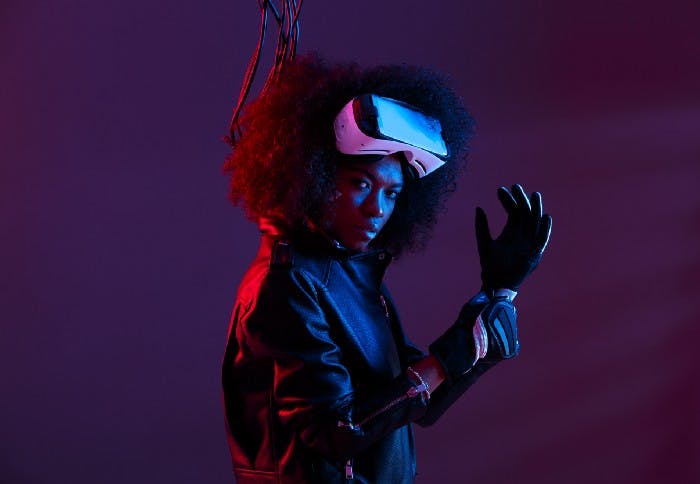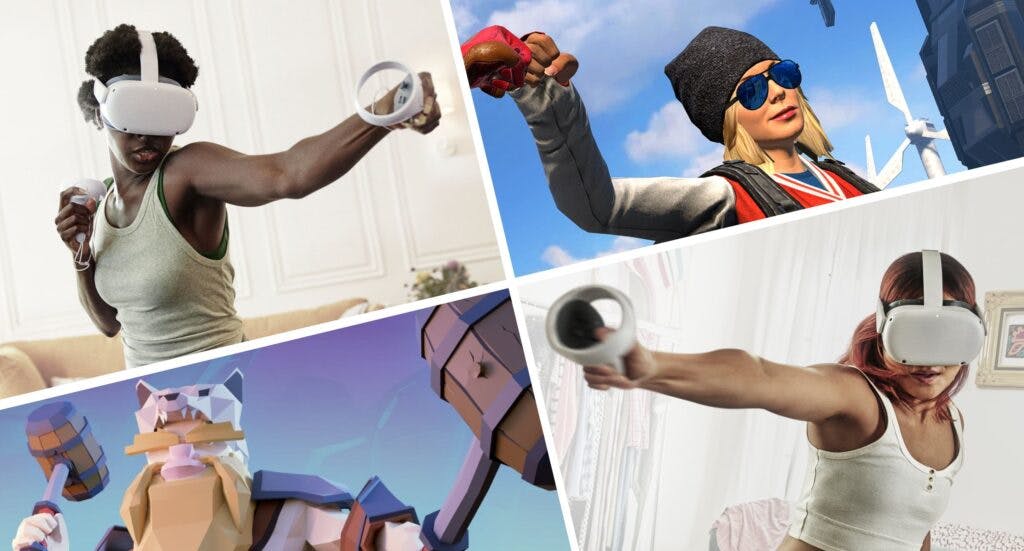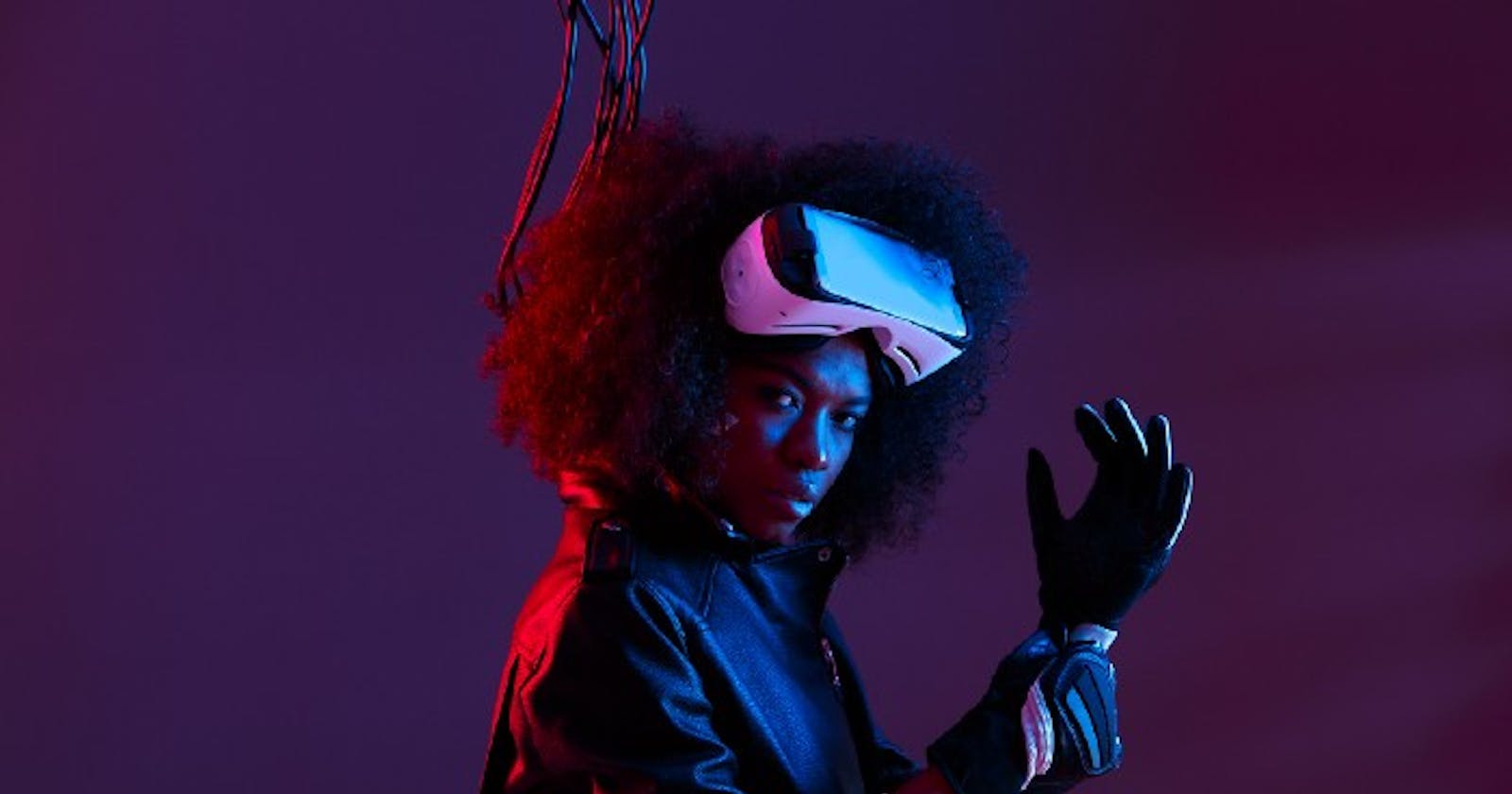The more you think about the Metaverse, the more perplexed you become. The uproar began when Facebook changed its name to Meta, keeping with its goal of building the Metaverse. The company announced that it would invest $10 billion in technology to realize its metaverse vision over the next year.

With the release of a series of Mark Zuckerberg Metaverse videos, it was clear that they wanted to control the Metaverse. Looking more closely at what is already happening, platforms such as Axie Infinity, Sandbox, and Decentraland have already incorporated some aspects of the Metaverse. In the Metaverse, Decentraland and Sandbox are already selling land.
With almost every major technology company contending for a piece of the Metaverse, the big question is whether there will be a single, all-encompassing metaverse or multiple metaverses. The answer is that the concept is still in the early stages of development and will undoubtedly expand beyond video games and social media platforms.

I believe that the Metaverse will greatly benefit remote working and decentralized governance. The country of Barbados, for example, is considering establishing a diplomatic mission in the Metaverse. Also, in the Metaverse, you can join your team members in virtual workspaces as 3D avatars in a way that far more closely feels like the real world.
The Web is gradually transforming into a platform for delivering 3D and virtual reality (VR) experiences. VR is now more accessible than ever, thanks to a new generation of headsets and sensors built into our smartphones.

Blockchain
In the Metaverse, transparency and open design are essential. Blockchain technology in the Metaverse is the basis for decentralized and transparent environments. The blockchain has the potential to bring a slew of new features to the Metaverse. Digital ownership verification, governance, value transfer, digital collectability, interoperability, and accessibility are a few examples.
The Metaverse's cryptocurrency adoption demonstrates how critical blockchain technology is to the Metaverse's future development. Cryptocurrency is a must when it comes to transferring value in the Metaverse. Users in the Decentraland metaverse can use their cryptocurrency to buy virtual real estate.
MANA, the game's native crypto token, can be used to purchase NFTs or virtual properties. As a result, blockchain technology will be critical to the development and operation of metaverses. In the form of NFTs, blockchain technology is vital for securing ownership of metaverse digital real estate and other assets.
Artificial Intelligence
There's no doubt that Artificial Intelligence (AI) is a significant technology driver for creating the Metaverse. There's currently a debate on the feasibility of incorporating AI into developing highly engaging and immersive metaverse platforms. AI applications in the Metaverse would primarily focus on evolving non-player characters (NPCs) in various contexts.
AI can aid in achieving realistic behavior from NPCs in response to player actions. Another notable application of AI for automation in the Metaverse is the ability to create metaverse avatars. AI can assist in creating more dynamic and realistic digital avatars based on 2D images or 3D scans of real users.
Internet of Things and 3D Reconstruction
3D reconstruction involves capturing the shape and appearance of natural objects. This process can be carried out actively or passively. Allowing the model to change shape over time is referred to as non-rigid or spatio-temporal reconstruction. Spatial computing or 3D reconstruction is critical for creating realistic spaces in the Metaverse. It contributes to preserving photorealistic structures, objects, and physical locations in the Metaverse while adhering to fundamental physical and scientific laws.
The term Internet of Things (IoT) refers to a network of connected devices and the technology that enables the communication between devices and the cloud and between each device. IoT is a critical technology for metaverse development. IoT allows connecting the Metaverse with numerous real-world devices. 3D reconstruction and the IoT can aid in creating the Metaverse, a digital world that is a replica of our physical world.
Augmented and Virtual Reality
VR is probably the most well-known term, which refers to a three-dimensional and computer-generated virtual environment used to replicate a natural setting or an imaginary world. Devices such as VR headsets/helmets, gloves, and body detectors equipped with sense detectors create VR environments.
With today's VR technology, we're only at the beginning stages of being able to have an immersive experience in a computer-generated world with just a headset and two hand controllers. VR can only affect our vision, hearing, and a minimal form of touch at this time, but this may change in the future. At this point, you are about halfway there in terms of total immersion.
With the VR headset, you can use body sensors to control your avatar with your entire body, bringing VR to a new level of immersion. Additionally, you can add a full-body haptic suit to allow people to touch you. Apps can add digital content to our natural world through the cameras on our phones, tablets, or smart glasses. This technology doesn't consider the users' surroundings or require them to interact with their space. It sits on top of any surface, with our world as a background.
Augmented reality (AR) refers to technology that places virtual objects and data right before our eyes. If I point my smartphone camera at buildings, it may provide me with additional information, such as the names of restaurants, gyms, and supermarkets. AR is a layer on top of our natural world. People can see the real world through their phones, tablets, or smart glasses and make virtual changes to it on the screen.
Here are some popular AR smartglasses currently available on the market:

How to Build this Virtual Universe
The Metaverse is a new technology and is rapidly evolving by the day. A lot of big tech companies are building out their own technologies for the Metaverse. To understand some of these technologies, let's take a look at WebVR, which is currently deprecated. It pays to know about it because it will set the stage for a more recent technology known as WebXR.
WebVR
WebVR is a JavaScript application programming interface that enables browsers to communicate with VR devices. Anyone who wishes to access the internet must do so via a browser, making it the most widely used application. If the VR experience is accessible via an internet browser, it is virtually accessible to anyone. Watch the video below to get a general idea of what WebVR is all about.
Please watch the video below to learn about WebVR and how you can use A-Frame to build your own Metaverse.
WebVR Frameworks You Should Know
Let's check out the most popular VR frameworks for the Web.
A-Frame
A-Frame is a WebVR framework that allows you to create immersive experiences. Examples are AR, VR, and immersive web-based applications, tools, and games. It is a three.js framework at its heart, bringing the entity-component-system pattern to the DOM.
The experiences allow for viewing and manipulating three-dimensional models and viewing and manipulating 360-degree images and videos. Additionally, the framework is used to design and implement responsive user interfaces and hand tracking in VR and AR applications. Check out this A-Frame WebVR Starter Kit from Glitch and Mozilla!
BabylonJS
BabylonJS is an open-source 3D engine built on WebGL and Javascript that enables developers to create 3D games and experiences using HTML5, WebGL, WebVR, and Web Audio. Beginners to coding in JavaScript should be able to learn a lot from the examples on this page. However, I strongly advise you to acquire a working knowledge of JavaScript before embarking on your own project development.
Primrose
Primrose is a framework for developing web-based VR experiences. Before Primrose, no framework provided a complete, default experience in as few as a few lines of code.
React 360
React 360 enables developers to create 360-degree and VR applications using only JavaScript. It follows the same design principles as React, allowing you to compose a rich VR world and user interface using declarative components.
Three.js
Three.js is a cross-browser JavaScript library/API for creating and displaying animated 3D computer graphics via WebGL in a web browser. You can find the source code on GitHub in a repository.
X3DOM
X3DOM is a JavaScript framework for declarative 3D scene creation in Web pages. Since it is based on standard browser technology, it does not require plugins to display X3DOM scenes.
XSEEN
XSeen is the first declarative language for VR, AR, and mixed reality (XR). It uses HTML-like tags and attributes fully integrated into the document's DOM and manipulatable via JavaScript.
WebXR
WebXR is an updated version of WebVR. It has broader support, more features, better performance, and VR and AR support. To know more about this transition, I suggest you watch the below video. %[youtu.be/b0KglUkvEak]
The WebXR Device API provides access to the input (pose data from the headset and controllers) and output (hardware display) capabilities of VR and AR devices. It enables you to create and host VR and AR experiences on the Web.
Benefits of Doing XR on the Web
With a WebXR-enabled Web Browser, you can instantly deploy to any XR platform.
- There is no need for app stores or large downloads, and users can access your experience without leaving your website.
- Future-proof experiences, as new AR and VR hardware is released regularly, your experience should continue to work on new hardware without the need to push new code.
- With a single release, an experience can target both VR and AR, handheld and head-mounted devices. To support VR and AR, only minor code changes are required.
- Because WebGL handles the rendering, which has been around since 2011, you gain access to WebGL's rich development tool ecosystem and a large and active developer community.
This year, Oculus will launch support for WebXR, the new standard for building VR and AR experiences on the Web that's intended to replace WebVR. This session will cover the latest innovations from Oculus for VR web experiences and the basics of transitioning from ** WebVR to WebXR.
You can read more about the goals of this standardization effort by reading the WebXR Explainer or visiting immersiveweb.
Awesome VR Gear You Should Know About

The Metaverse's notable technologies are blockchain, AR and VR, AI, 3D reconstruction, and IoT. A lot is still happening in this space, and technology is evolving rapidly. The Metaverse will likely have four stages.
Right now, I think we are still in the first stage.
Stage two will bring affordable haptic bodysuits and omnidirectional treadmills or shoes to the mass market, allowing your entire body to move and feel in a virtual world just as it would in the real world.
Stage three is advanced VR. Here technology can send signals directly to the brain to completely replicate a virtual environment without using a user interface.
In stage four of the Metaverse, the natural world becomes entirely indistinguishable from one another. Humans can now use advanced neurotechnology to map the mind and upload it to the Metaverse completely.
Conlusion
Judging from the data I have gathered so far. Metaverse is still very much an infant. Meta is currently losing a lot of money building out its own technology for the metaverse. I have seen some exciting projects on building a decentralized metaverse on the Polkadot Network by metaverse.network. The whole idea is to empower non-technical people to make metaverses for their communities.
The race is on; will the metaverse become decentralized or owned by big tech? I really don't have the answers. Let's all watch and see as it evolves.


